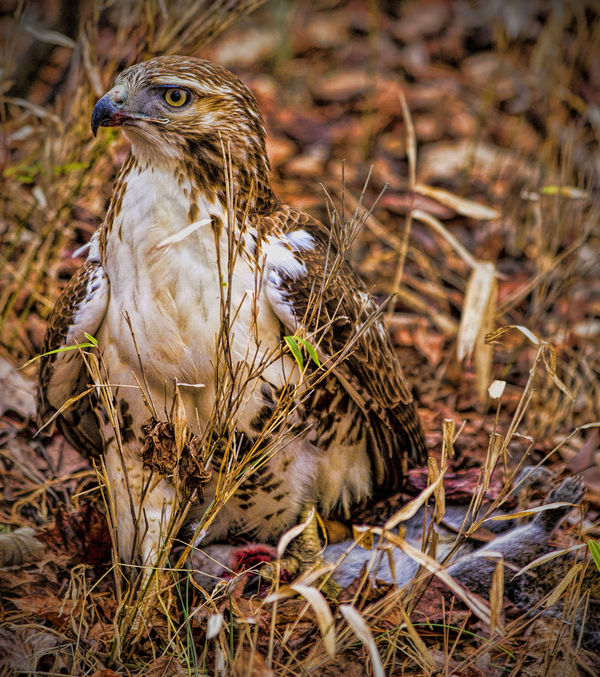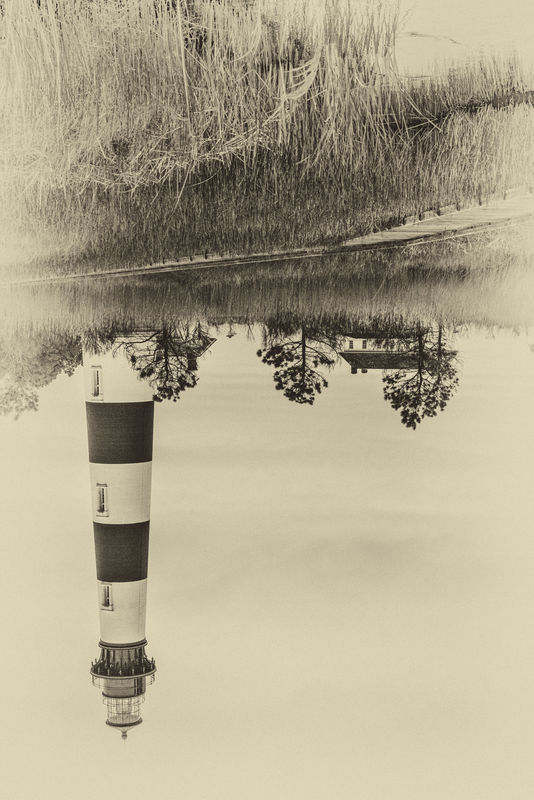Canon 5dmiii?
Mar 10, 2015 05:45:12 #
Rongnongno wrote:
I wonder what you did when AF and VR did not exist...
When those didn't exist I used some lube and a lot of spit. I also brought along a helper to keep things rolling smooth.
Mar 10, 2015 06:12:27 #
Mar 10, 2015 06:24:17 #
I immediately changed 61 point to 41 cross type point. It's more accurate and still has plenty to compose properly. I seldom use center point unless BIF. IMO center point isn't as useful compositionally.
Mar 10, 2015 08:21:57 #
ralphc4176
Loc: Conyers, GA
When I use autofocus, I almost always use only the one center spot. I presume the multitude of focus points is to let the camera pick a point of focus and aperture setting that would give the best photo, but you can do the same thing yourself with appropriate adjustments of exposure time and aperture settings. I don't know how effective the multiple-point focus is, because I've never used it.
Mar 10, 2015 09:58:48 #
jrushphoto
Loc: Flint, MI
Center spot and back button focus. Hard to beat. Pick the point of focus you want and then re-compose your shot without worrying about any delay while the camera tries to refocus. Moving objects, just go to servo mode (with Canons) and hold the BBF until you're ready to fire.
Mar 10, 2015 10:05:27 #
jrushphoto wrote:
Center spot and back button focus. Hard to beat.
Agree. Plus I just shut off the 1/2 press on the shutter button, to make things less confusing.
Mar 10, 2015 10:53:38 #
Tracy B. wrote:
Thanks everyone for taking the time to respond. I'm learning a lot about this camera. Hopefully, by the time I purchase one, I'll at least not be too overwhelmed. I do use BBF. I read about the AF-on button focusing on the right side while shutter button focuses on the left side. If you push the AF-on button, then push the shutter button to take the picture, wouldn't the focus be changed if you didn't disable the shutter button? I don't understand how you can have it both ways.
Tracy,
You can't have it both ways. Like you said if you don't disable the focus feature on the shutter button it will try to focus again. It's easy enough to do, it is only one thing on the menu that you need to change.. I switch back and forth all the time if I am using a remote release.
As for which focus points you use it all depends on what you are shooting. If you're shooting a stationary subject then use the center point. If I am shooting birds in flight I use the autofocus expansion, it works well for me.
Jim D
Mar 10, 2015 11:12:16 #
I have 5D MIII and love it.
In my studio for one person portrait and on a single animal, bird, wildlife shoot, " single point".
Large landscape panorama "all points"
Other times I'll keep my MIII in " Center Points".
You will get very fast to use this system.
At ones you look your view finder you will see red square or a numerous of them depends on you'r setting, your right hand finger do control control focus point and moves red square to the object focus point as you do like it, at a like person nose or to the eye.
Some people keep the camera on the "center point", BUT wen one turns camera to vertical to horizontal they will missing that 100% perfect focus spot.
In my Sony I am missing Canon super focus system.
In my studio for one person portrait and on a single animal, bird, wildlife shoot, " single point".
Large landscape panorama "all points"
Other times I'll keep my MIII in " Center Points".
You will get very fast to use this system.
At ones you look your view finder you will see red square or a numerous of them depends on you'r setting, your right hand finger do control control focus point and moves red square to the object focus point as you do like it, at a like person nose or to the eye.
Some people keep the camera on the "center point", BUT wen one turns camera to vertical to horizontal they will missing that 100% perfect focus spot.
In my Sony I am missing Canon super focus system.
Single focus point on the eye

All focus points, up side down on Hogs why?

Center focus points

Mar 10, 2015 11:23:07 #
Rongnongno wrote:
Honestly I despise auto focus...
Manual is faster and more accurate, in my opinion.
Manual is faster and more accurate, in my opinion.
???
Mar 10, 2015 11:57:21 #
Rongnongno wrote:
I wonder what you did when AF and VR did not exist...
Shot manual of course but why not use them when appropriate? New tools and technologies help us take better pictures.
Mar 10, 2015 12:58:12 #
My photography teacher (the preeminent wedding photographer here in our Southern California area) uses a pair of 5DM3 cameras with Canon L lenses. His work is truly amazing. Very fast, great build - easy to operate (even for a Nikon shooter like me) and just has the "professional feel" Canon pro cameras are known for. Bob normally uses a single spot focus in the center of his viewfinder, and then readjusts as he composes his shot. I don't think you could go wrong with this camera.
Mar 10, 2015 13:44:01 #
Then what does this mean?
Some photographers like to control AF and light metering independently, so they configure their camera not to focus when the shutter button is operated. Instead they use the AF-ON button on the back of the camera for AF. I strongly oppose this method because you lose a major advantage the 5D Mark III offers: focusing on two different focus points or areas with two different buttons. My usual setup incorporates the AF-ON button focusing on the left side of the frame while the shutter button focuses on the right side (this seems logical to me since the AF-ON button is physically more to the left and the shutter button more to the right).
Some photographers like to control AF and light metering independently, so they configure their camera not to focus when the shutter button is operated. Instead they use the AF-ON button on the back of the camera for AF. I strongly oppose this method because you lose a major advantage the 5D Mark III offers: focusing on two different focus points or areas with two different buttons. My usual setup incorporates the AF-ON button focusing on the left side of the frame while the shutter button focuses on the right side (this seems logical to me since the AF-ON button is physically more to the left and the shutter button more to the right).
oldtool2 wrote:
Tracy, br br You can't have it both ways. Like y... (show quote)
Mar 10, 2015 15:09:39 #
amfoto1
Loc: San Jose, Calif. USA
Rongnongno wrote:
Honestly I despise auto focus...
Manual is faster and more accurate, in my opinion.
Manual is faster and more accurate, in my opinion.
Ignore this... Sorry to say, it's bunk.
I've been shooting for 35 or more years... All sorts of stuff, including lots of fast action stuff such as sports. At one time, I was damn good with manual focus lenses (still use some, though not very for action shots anymore)...
I can assure you that when it's used right modern AF is both faster and more accurate than me or anyone else ever was with manual focus.
But you are asking about Canon 5DIII specifically and some background info might be more helpful than snide remarks and opinions.
First, Canon have both focus "modes" and focus "patterns".
A Focus Mode needs to be chosen first and there are:
One Shot... for use with stationary subjects. In this mode the once focus is achieved, the AF system stops and locks... and you get a "Focus Confirmation". In order to refocus or update focus, you have to fully lift off the shutter release and AF On button, then reapply pressure.
AI Servo... for use with moving subjects. This is continuous focus... subject distance is measured and updates several times per second and the lens is adjusted accordingly. It doesn't stop or lock, so long as you maintain half-press of the shutter release button (which can optionally be turned off to use a technique called Back Button Focusing), or as long as you maintain pressure on the AF On button under your thumb on the back of the camera. There is no Focus Confirmation possible and you cannot use "focus and recompose" technique (unless using Back Button Focusing).
AI Focus is a third choice on many Canon, including 5III, but really isn't a focus mode at all. This is more automation... Set to it the camera is supposed to decide for you whether or not the subject is moving, and then switch to use the correct mode: either One Shot or AI Servo. I avoid this and haven't even tried it in many years, but last time I did it seemed to cause a slight delay and clearly chose incorrectly at times. It might be a clue that the most pro-oriented 1D series Canon cameras don't even have AI Focus... they only have One Shot and AI Servo.
Most of the time people will set the camera to One Shot by default. This is necessary for some focusing techniques (focus and recompose) and it gives you reassuring Focus Confirmation. However, it is not good for moving subjects, or if a stationary subject suddenly starts to move.
Using Back Button Focus (BBF), it's possible to use AI Servo by default, with both stationary and moving subjects under almost any condition.
Using AI Servo has another key benefit... many modern zoom lenses are varifocal, which means that they don't maintain focus when zoomed to a different focal length (as opposed to "parfocal" zooms, which are more expensive to produce and can be more difficult to maintain focus accuracy). With One Shot you have to remember to refocus after any change in a zoom's focal length... With AI Servo refocusing is done instantly and automatically.
I still switch to One Shot for higher precision shooting with stationary subjects... But I use AI Servo (with BBF) most of the time. I average 96-98% usably in-focus shots, when I'm in practice. Instead of 5DIII, I use 7Ds which have "only" 19 AF points (instead of 61)... but have pretty much the same Focus Patterns:
All Points/Auto Selection is an AF pattern that all Canon DSLRs have... And is the one I use the least. It relies on the camera to choose the point of focus, usually whatever is closest and covered by one of the AF points. I'd only use it with a really fast moving subject, when there are no obstructions between me and the subject, and the subject is against a plain and/or quite distant background.
Even then, the camera can choose wrong... Example, photographing a bird flying past using All Points, chances are the camera will focus on the closest wing tip... which might mean the birds eye or farther wing tip at not in focus (depends upon the distance, focal length and aperture being used... all of which decide depth of field.)
With All Points, there is no priority... Any of the AF points can start focus. (5DIIII has 61 points... but only 41 of them are a more sensitive "cross type"... those are the ones more likely to start focusing). One or more of the other AF points can "take over" focusing from the initial one.
All Points leaves a lot up to luck, IMO. That's why it's the mode I use the least... almost never, in fact.
Zone Focus is sort of like a smaller version of All Points, limited to a particular area within the image.... It can be set up to the left or right, top or bottom, or centered, depending upon where you plan to put the subject in the frame. It has some of the same limitations as All Points, in my opinion. But I find it a bit more useful and use it occasionally.
Expansion Points are a different type of pattern. Here you select a single "starting point" for AF to use, but allow AF to switch to adjacent points if the subject moves away from that initial AF point. This is useful with more erratically moving subjects and is a mode I'll use more often.
Spot Focus is available on a few Canon (incl. my 7Ds), and is simply high precision Single Point AF... By using a smaller than normal AF point (the 5DIII's AF points are pretty small already, so I'm not sure if it offers this pattern). Although it's slightly slower than standard size AF points, I find Spot Focus can be quite helpful when shooting a bird in a tree, amidst a tangle of branches, or another critter in tall grass, for example.
Single Point is found on all Canon DSLRs and is what I use the most, by far. Here you manually choose one AF point that the camera will use. It puts the photography most fully in control of where the camera focuses.
With most Canon models, the center AF point is a higher performance type (though maybe only with f2.8 and faster lenses), so often that's the one I'll use by default. I have to balance this off against the subject being centered in all my shots! (Besides choosing an off-center AF point, another solution is to simply not frame images too tightly while shooting, so that it's possible to do a little cropping in post-processing and the subject will no longer be centered in every shot.)
I'd used Canon's with only All Points and Single Point for many years, almost exclusively in the Single Point pattern. When I first got my 7Ds I was really excited about all the additional patterns and anxious to try them out a lot.... Soon discovered that the old acronym "K.I.S.S.... Keep It Simple, Stupid" applies here too. Yes, those "fancy" patterns can be useful at times... But I've found my best results are when I stay in control of AF as much as possible... using Single Point. So that's still what I use most, even with all the other "fancy" options.
There are also some Custom Function settings pertaining to how AF operates. Those are pretty well explained in the manual (plus the default settings usually work pretty well to start), so I won't go into much detail here. Just know that they can be used to fine-tune AF performance for certain circumstances.
For example, there is a Custom Function controlling how fast AF will respond to a significantly different distance when tracking a moving subject in AI Servo. This is useful if while tracking a subject temporarily moves behind an intruding object (such as a blade of grass or branch). Many people like to set this slightly to the minus (-) side, causing AF to delay jumping to the closer subject, because it also can prevent losing focus if you accidentally let the AF point slip off the subject for an instant. When I'm out of practice with particular types of subjects, I'll set it this way too. But, because it also seems to effect how responsive AI Servo is to subjects that change direction, I'll turn it back up toward the plus (+) when I'm more in practice. That shortens any delay in changing focus.
All these things get better with practice and experience. Initially it can seem overwhelming and the temptation is to rely too heavily on the automation. (I did that as an early adopter of the 7D and paid the price with a lot more missed focus shots.... but got much better once I reined myself in and applied KISS to my use of the camera!)
5DIII has something that my 7Ds don't. It has AF "Cases".... these are essentially pre-programmed setups for specific types of subjects. Frankly, I would probably never use them. I would want to learn the various settings and make them myself, tailoring the camera to my use rather than depending upon someone else's ideas how I should use it. To me the Cases just make for more complexity and confusion, although they are probably intended to make things easier and simpler. To me, the Cases are a lot like exposure Scene Modes, which I also don't use. I'd rather learn the camera and make my own settings, be they exposure-related or AF-related.
It can seem intimidating at first, but 5DIII has a pretty darned nice AF system. It's also geared a bit for low light work... It (and the 6D) can still focus about 2 EV lower light than my 7D and most other Canon models. This is good, because it makes the camera better able to take advantage of it's very high ISO capabilities.
If you just find the 5DIII's AF way too much, your might want to consider the 6D instead. It uses a much simpler, more "classic" style 11-point AF system. That's not nearly as configurable and customizable. It's a lot more straight-forward and simple. The 6D has only one "high performance" cross-type and low light AF point, the center one. And it only has All Points and Single Point AF patterns. But these can be more than adequate for many peoples' uses.
If you want to be able to shoot a lot of moving subjects (sports, wildlife/birds)... I'd recommend the 5DIII. If most of your subjects are more stationary (portraits, scenic), the 6D might serve quite well. Either camera can be used for the other purposes... a 5DIII certainly can shoot portraits, too.... But you pay a lot extra for the high performance AF of the 5DIII, and it might be a waste of money for you, if you don't really need it. And 6D might be used for sports.... but is going to be significantly more limited doing so and is unlikely to give as high percentage of in-focus action shots.
There are many good resources to help learn to use the Canon AF systems well... For starters, I'd recommend videos B&H recorded of a seminar about AF presented by Rudy Winston, one of Canon's tech people. That's on Youtube as three half-hour videos. Canon also has info at their Learning Resource Center, both general in nature and materials specific to some models such as 5DIII.
I'm sure Nikon, Pentax, Olympus, Sony and everyone else making cameras have various similar features to what's described above... Probably just using different names for them.
Mar 10, 2015 15:52:25 #
amfoto1 wrote:
Ignore this... Sorry to say, it's bunk. br br I'... (show quote)
Thanks, amfoto1.
Lots of good info.
Marion
Mar 10, 2015 16:14:52 #
Thank you so much for taking the time to answer my questions. I learned a lot.
amfoto1 wrote:
Ignore this... Sorry to say, it's bunk. br br I'... (show quote)
If you want to reply, then register here. Registration is free and your account is created instantly, so you can post right away.








